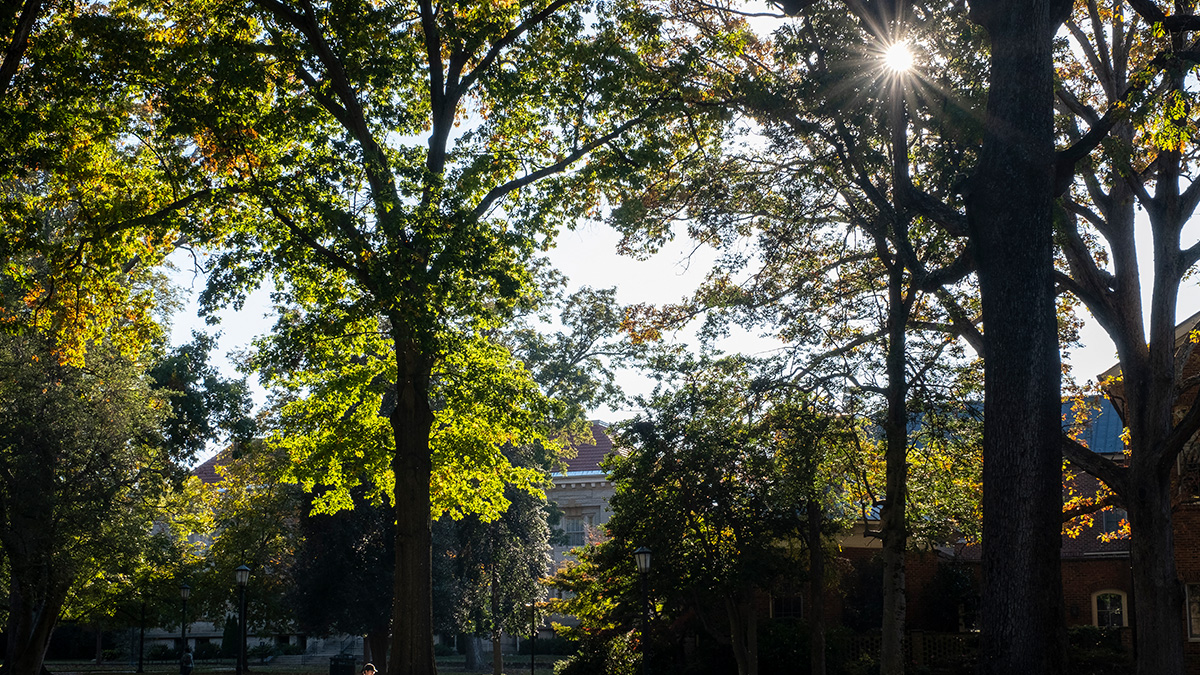225 years of Carolina architecture
JJ Bauer, a teaching assistant professor in the College of Arts & Sciences' Department of Art and Art History, helps illuminate the stories behind Carolina’s buildings in a book on campus architecture.

The well-worn, 1986 copy of John Allcott’s seminal book on UNC-Chapel Hill architecture was so popular that UNC Visitors Center staff had to practically hide it and keep it chained to a desk.
It’s the only book devoted exclusively to the architecture of the nation’s first public university.
The Chapel Hill Historical Society, under the leadership of Carl Anderson, decided to do something about the short supply and recently published an updated version of The Campus at Chapel Hill: Two Hundred Twenty-Five Years of Architecture. An addendum by JJ Bauer, visual resources curator and teaching assistant professor in the College of Arts & Sciences’ Department of Art and Art History, showcases seven featured building projects since 1986. Bauer’s research interests focus on design and architecture, and she teaches an introductory course where students connect Carolina campus architecture to world architecture.
The book is filled with historical photos, rare documents, Allcott’s whimsical sketches and the stories of the people behind the buildings. Allcott was a longtime art professor who chaired the department from 1940 to 1958 and taught generations of students.
The campus’ 10 original buildings, dating from 1793, are outlined in the beginning chapters. Can you name them? (They are Old East, Person Hall — once a chapel — South Building, Old West, Gerrard Hall, Smith Hall/Playmakers Theatre, New West, New East, Old Memorial Hall, which was torn down in 1897, and Carr Building.)
Those original buildings are covered in some detail. For the 20th century, when buildings proliferated, only selected ones are discussed, but all structures erected before 1985 are listed in the campus chronology.
“People who come to UNC-Chapel Hill — whether as students, faculty, alumni, town residents or visitors — develop a very strong attachment to this place,” said Bauer, who received her Ph.D. from Carolina in 2004. “People walk their dogs through Battle Park, participate in campus tours or attend events here. Often they are curious about the stories behind the buildings.”
One story features the details behind the Old Well’s current look – modeled after the Temple of Love in the Garden of Versailles. That can be attributed to President Edwin Alderman, Bauer said, who was president of the University for only four years, but transformed the Old Well by building a new structure over the existing one in 1897. Today, it’s arguably Carolina’s most recognizable and beloved structure.
As with most campuses, there were times of economic boom and bust, Bauer noted. South Building took a long time to be built (begun in 1798 and eventually finished in 1814.) “At one point, students set up temporary shelters in the unfinished, unroofed rooms so they could study and have class.”
Bauer highlights several important building projects in the addendum, like the Sonja Haynes Stone Center for Black Culture and History, which was a project of Durham architect Phil Freelon, who recently passed away. One of the key things he brought to campus planning was getting stakeholder input — especially from students — in a programmatic way that influenced the building’s design.
A favorite for Bauer is the FedEx Global Education Center — “It’s fairly subtle and you may think of it as just two attached boxes, but award-winning architect Andrea Leers was influenced by Japanese architecture, so even though what you see is radically simple, it has very interesting variations in its design as well as its commitment to sustainability.”
If she could sum up the look and feel of the University post-1986, what would she say? “Clearly, tradition still has a stronghold.”
“Even with as modern a building as the FedEx GEC or the Genome Sciences Building — you recognize elements of tradition. The red brick, for instance, is a constant. But on a philosophical level, one of the things that makes the campus so attractive is all of the open plazas and spaces for just hanging out.
“This idea that it’s about making places and spaces is still very much a part of UNC-Chapel Hill.”




